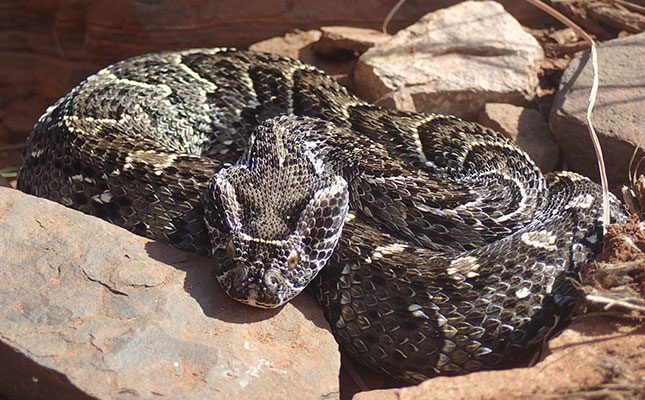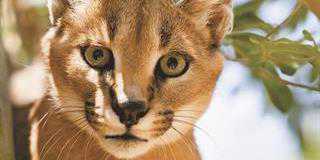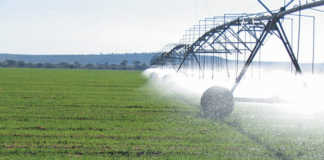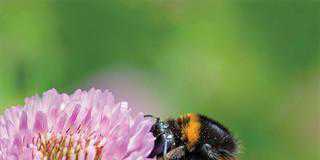
Photo: Bernard du Pont/Flickr
On a sunny Kalahari afternoon moments after landing at Tswalu Kalahari Wildlife Reserve, writer Brian Berkman had a chance meeting with Azraa Ebrahim and assumed she was another guest about to also begin her safari.
Assumptions were quickly corrected as Wits University doctoral candidate Ebrahim told Farmer’s Weekly of her Tswalu Foundation-funded research into puff adder thermal biology and space use.
According to the Tswalu Foundation, the foundation stemmed from a vision that Jonathan and Jennifer Oppenheimer had to provide a means of both encouraging and facilitating environmental research at Tswalu Kalahari.
In 2009, this vision became a reality when the foundation was created with seed money from the family being used as initial capital to fund various research projects on Tswalu.
From its humble beginnings, the Tswalu Foundation has grown into a world leader in the field of environmental research within the southern Kalahari and attracts research teams from across the globe.
In order to generate income for research, a core objective of the foundation has always been to stimulate interest among staff and guests through ongoing interaction with both researchers and foundation staff during their visits to Tswalu.
Through the carefully selected research projects on the go at Tswalu Kalahari, the foundation continues to contribute in a meaningful way to the scientific and ecological management, not only of this reserve, but of communities both locally and internationally.
In the beginning
Ebrahim told Farmer’s Weekly that growing up, she always wanted to pursue a career in zoology or conservation.
“While I did not have a specific interest in reptiles, I wanted the opportunity to work with wildlife and be based in the field.
“During my undergraduate degree, I was fortunate to have been lectured by phenomenal scientists, one of whom was Prof Graham Alexander. I thought I would enjoy working with Graham on a project and asked if he had any research opportunities available.
“I was able to conduct my master’s research on dwarf chameleons under the supervision of Graham and Prof Krystal Tolley, another prominent researcher in the herpetology community. My master’s research was on the thermal physiology of chameleons, and I thoroughly enjoyed the physiological aspect of the study, as well as working with reptiles.
“So when I came across an advert to conduct a thermal biology study on puff adders, I thought that it would be a good opportunity for me to apply what I had learnt from my master’s while challenging myself and expanding my skill set.
“During my master’s, I got to spend a lot of time with other members of the herpetology community, and they really sparked my interest in several species of reptiles and amphibians.”
Resilient
Ebraham says she was awestruck by the diversity of reptiles in Southern Africa, and fascinated by how some species can employ behavioural strategies in response to environmental changes, and how resilient this can make them in some instances.
“Puff adders occupy a wide range of habitats with different environmental conditions. By assessing how puff adders in a hot and arid environment cope with these conditions, we can infer how other populations may behave if conditions become hotter and more arid.”
She adds that the Kalahari is expected to face more dramatic temperature increases than other regions, which poses a significant risk for species in this region. “Ambush-foraging species, such as puff adders, need to spend extensive time on the surface waiting for prey. Increases in surface temperatures may affect the foraging success of these snakes,” she explains.
“Additionally, high temperatures may affect the activity period for snakes and influence the frequency of behaviours such as basking and mate searching.”
She adds that for research purposes, puff adders are
Captured opportunistically using snake tongs. A vet then implants a transmitter and data logger into the snake, which record the snake’s body temperature at regular intervals.
“At the end of a year, the transmitter and data logger are ex-planted, and thermal data is downloaded.”
Ebrahim explains that these findings could be applied to other ambush-foraging snakes, such as Albany adders or Namaqua dwarf adders.
“Similarly to puff adders, increasing surface temperatures could influence foraging behaviour and affect the distribution of these species.
“People usually have questions on the general ecology of puff adders, such as what their diet comprises, whether they are territorial, how far they move, and whether they are active during winter.
“Many people aren’t aware that puff adders, among several other snake species, for example, give birth to live young. I have found that the general fear many people have of snakes is rooted in misconceptions of their behaviour and demeanour. Snakes, particularly puff adders, sometimes get a reputation for being aggressive. But any animal will show defensive behaviour if provoked. If there is more public awareness on the role that snakes play in regulating small mammal populations, this might help improve conservation efforts.”
Reptiles often get neglected from conversations around conservation as they are not deemed to be as charismatic as some other species.
“Perhaps engaging with more people about the behaviour of reptiles and the important roles that they play in the ecosystem could help improve the perceptions people have of them.”
When it comes to current climate change research, Ebrahim says she is looking forward to seeing more studies on how climate change may impact the behaviour and physiology of various reptile species. In terms of her own studies, she says she does not yet have any specific recommendations based on her findings.
The importance of reptiles
So why should the public be interested in protecting reptiles like snakes? Ebrahim says that as snakes play a key role in regulating rodent populations, their disappearance could lead to a significant increase in these populations, which is bad news for food production.
However, much more research is needed to understand the predator-prey dynamics of snakes and their prey, she says.
“I feel a strong sense of responsibility to advocate for [snakes] and educate people about them in the hopes that it can improve their welfare to any extent,” she says.
Highlights
When it comes to what she finds most fascinating about snakes, Ebrahim says it is their ability to camouflage that really stands out.
“While there are not any specific moments that stand out, I am always amazed by how effective their camouflage is. I often spend ages looking for an individual, just to find it sitting in plain sight.
She adds that her research would not be possible without the help of individuals in the industry.
“Doing long-term radio-telemetry studies are an excellent way of collecting data on a study animal but can be pricey. The financial support provided for these projects are vital for expanding our knowledge of the environment.
“The veterinarians on the project also bring a wealth of skills and knowledge to the research.
“Due to the nature of the work, vets often have to make arrangements to come all the way out to the field site to perform surgical implants of data loggers at short notice.
“I am immensely grateful for the role they play. I would like to continue conducting research on the physiology of reptiles,” concludes Ebrahim.
Her advice to others entering the conservation industry is to not be discouraged by people advising them to take a more conventional career.
Tswalu Kalahari makes a point of stressing that each time a guest visits they help to continue the conservation work and fund research studies.
Visit tswalu.com










